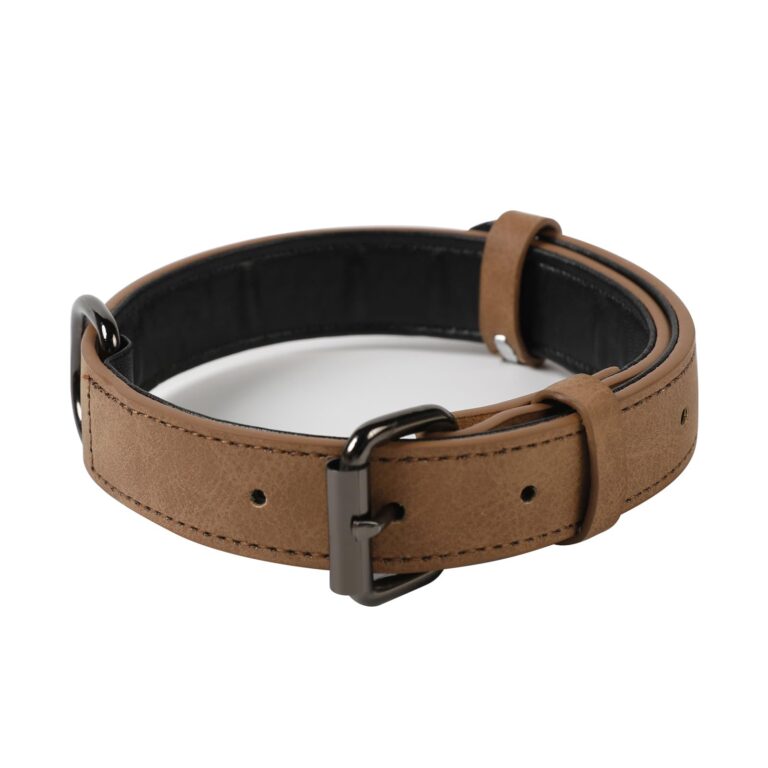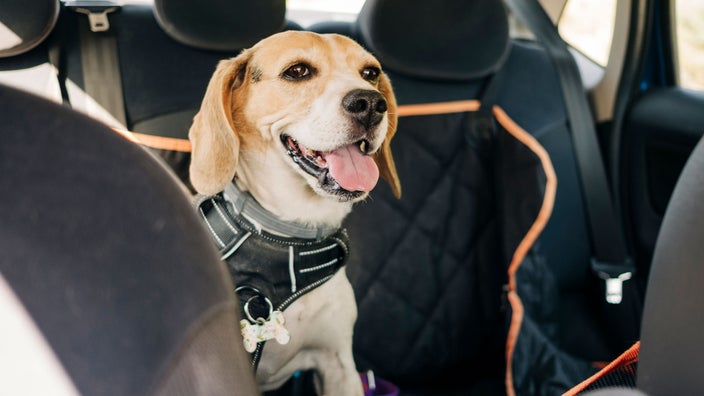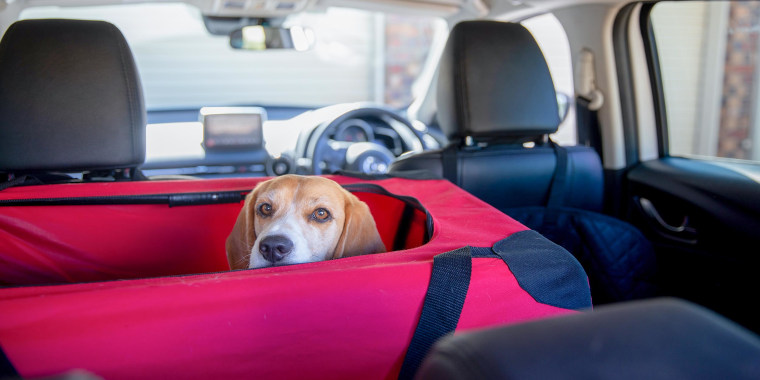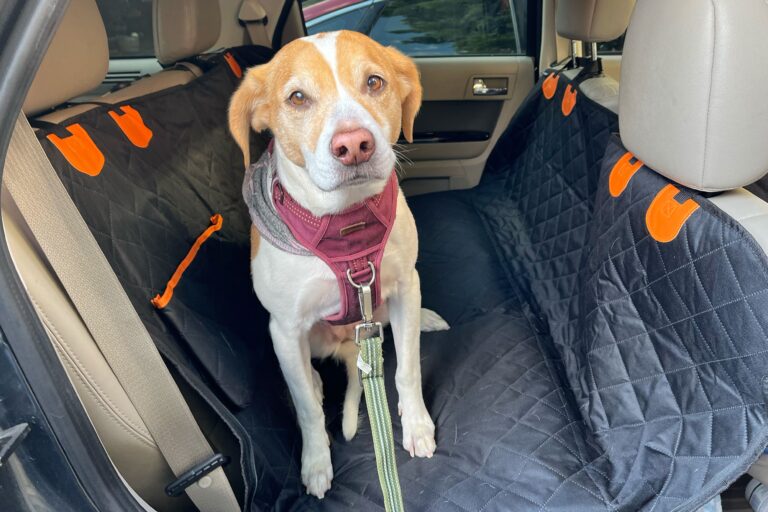Is Driving Stressful for Dogs? Unveiling the Truth
Driving can be stressful for dogs. They may experience anxiety, motion sickness, or discomfort.
Many dogs show signs of stress during car rides. Symptoms include panting, drooling, whining, or restlessness. The unfamiliar noises and movements of a car can be unsettling for them. Some dogs might even experience motion sickness, leading to vomiting or lethargy.
Ensuring a comfortable and secure environment can help. Using a dog seatbelt or crate provides safety and reduces anxiety. Frequent breaks, familiar toys, and gentle reassurances can also make the journey smoother. Understanding your dog’s behavior and needs is crucial for a stress-free trip. Proper preparation and care can transform driving into a more enjoyable experience for both you and your furry friend.
The Canine Experience On The Road
Driving can be a unique experience for dogs. Some dogs love the adventure, while others feel anxious. Understanding what your dog goes through can help make trips more enjoyable. Let’s explore the canine experience on the road.
Variations In Dog Temperaments
Dogs have different temperaments. Some dogs are naturally calm and enjoy car rides. Others are more sensitive and can feel stressed. Breed, age, and past experiences influence their behavior.
| Temperament | Common Behaviors |
|---|---|
| Calm | Relaxed, enjoys the view, may sleep |
| Anxious | Panting, whining, shaking |
| Excited | Barking, jumping, trying to move around |
Signs Of Stress In Traveling Dogs
Knowing the signs of stress can help you comfort your dog. Here are some common signs:
- Panting: Excessive panting when not hot
- Shaking: Trembling or shivering
- Whining: Continuous crying or barking
- Drooling: More saliva than usual
- Pacing: Moving around restlessly
Addressing these signs early can make the trip smoother. Use positive reinforcement to calm your dog. Speak in a soothing voice and offer treats. This reassures them that everything is okay.
Factors Influencing Dog Stress Levels While Driving
Driving can be stressful for dogs. Many factors influence their stress levels. Understanding these factors helps make the journey smoother. Below are key elements to consider.
Length Of The Journey
The length of the journey can affect a dog’s stress levels. Short trips may be less stressful. Longer trips may cause anxiety. Dogs might feel trapped in a moving vehicle. Frequent breaks can help. Allow your dog to stretch and relieve itself. This can reduce stress.
| Journey Length | Stress Level |
|---|---|
| Short | Low |
| Medium | Moderate |
| Long | High |
Familiarity With Vehicle Environment
Familiarity with the vehicle environment can also impact stress. A dog used to car rides will feel calmer. If the vehicle is new or rarely used, stress levels might rise. Creating a familiar environment can help. Use blankets or toys that the dog knows. This provides comfort and reduces anxiety.
- Use familiar blankets
- Bring the dog’s favorite toys
- Play calming music
Previous Travel Experiences
Previous travel experiences play a significant role. Positive past trips can make future trips easier. Negative experiences can increase stress. Gradual exposure helps. Start with short, positive trips. Gradually increase the distance. Reward your dog with treats and praise. This can build positive associations with travel.
- Begin with short trips
- Gradually increase trip length
- Use positive reinforcement
Physiological Responses To Stress In Dogs
Driving can be stressful for dogs. They often show physiological responses when stressed. Understanding these responses helps in keeping your pet calm.
Stress Hormones In Canines
When dogs are stressed, their bodies release stress hormones. The main hormones are cortisol and adrenaline. These hormones prepare the body for “fight or flight.” Elevated cortisol levels can lead to various health issues.
| Hormone | Effect |
|---|---|
| Cortisol | Increases blood sugar and suppresses the immune system |
| Adrenaline | Increases heart rate and energy levels |
Physical Symptoms Displayed By Stressed Dogs
Dogs show physical symptoms when they are stressed. These symptoms can be easy to spot.
- Panting
- Shaking
- Excessive drooling
- Whining or barking
- Yawning
- Licking lips
It’s important to recognize these signs. Understanding them helps in taking immediate action to comfort your dog.
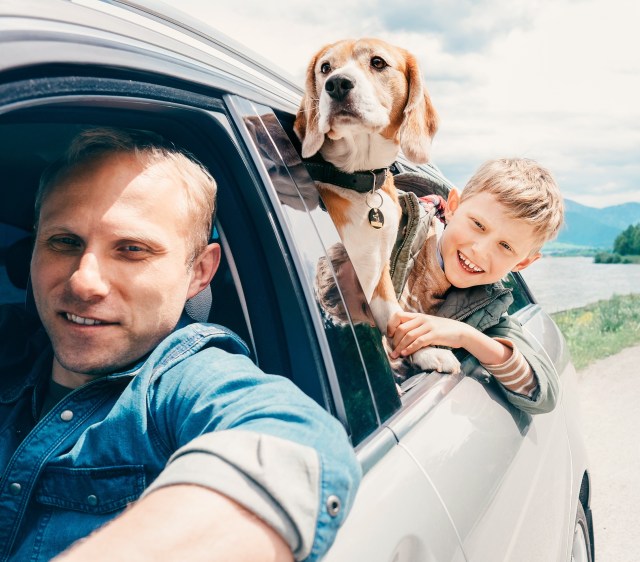
Credit: santanderconsumerusa.com
Assessing Your Dog’s Comfort With Car Rides
Many dogs find car rides stressful. This can make travel a challenge for both pets and their owners. Understanding your dog’s comfort level is essential for ensuring a pleasant journey. By observing your dog’s behavior and looking for specific comfort indicators, you can determine how to best support them during car rides.
Behavioral Observations
Watch for signs of stress in your dog. These signs can help you gauge their comfort level.
- Panting: Excessive panting can indicate anxiety.
- Whining: Dogs often whine when they feel uncomfortable or scared.
- Shaking: Shaking or trembling is a clear sign of stress.
- Restlessness: Moving around a lot might show they can’t settle down.
- Drooling: Excessive drooling can be a sign of nausea.
Comfort Level Indicators
Look for positive signs that your dog is at ease during car rides.
| Indicator | Description |
|---|---|
| Relaxed Posture | Your dog lies down calmly without fidgeting. |
| Normal Breathing | Breathing is steady and not labored. |
| Engagement | Your dog looks out the window or shows interest in surroundings. |
| Eating Treats | Accepting treats indicates they are not too anxious. |
By carefully observing these behaviors, you can better understand your dog’s needs. This ensures a more comfortable experience for both of you during car rides.
Minimizing Stress For Your Canine Companion
Driving can be a stressful experience for dogs. Many dogs feel anxious in moving vehicles. This stress can lead to restlessness, barking, or even nausea. By following some simple steps, you can help make the trip more comfortable for your furry friend.
Creating A Safe Space
Creating a safe space for your dog in the car is crucial. Dogs feel more secure in a confined area. Use a crate or a dog seat belt to limit their movement. This can prevent injuries and reduce anxiety.
Ensure that the crate is large enough for your dog to stand, turn, and lie down. Place a soft blanket or a favorite toy inside. This makes the crate feel more like home. Avoid placing the crate in the front seat. Airbags can be dangerous for pets.
Consistent Travel Routines
Consistency helps dogs feel secure. Establish a travel routine that includes regular breaks. Plan stops every two hours. Allow your dog to stretch, relieve themselves, and drink water.
Feed your dog a light meal a few hours before the trip. Avoid feeding them right before or during the journey. A full stomach can lead to nausea. Bring their regular food and water with you. This helps maintain their routine and reduces stress.
Use familiar commands and maintain a calm tone. Praise your dog for good behavior during the trip. This positive reinforcement can help reduce their anxiety.
The Role Of Training In Alleviating Travel Anxiety
Driving can be stressful for dogs. But training plays a crucial role in reducing their travel anxiety. With the right techniques and strategies, you can make car rides enjoyable for your furry friend.
Desensitization Techniques
Desensitization helps your dog get used to car rides. Begin by letting your dog explore the car while it’s parked. Allow them to sniff around and get comfortable.
Next, start with short trips. Drive around the block a few times. Gradually increase the length of your trips. This step-by-step approach helps your dog adapt.
Use a calm and soothing voice during these sessions. Your dog will pick up on your relaxed demeanor. This can help them stay calm.
Offer treats and praise during and after each trip. This creates a positive association with the car.
Positive Reinforcement Strategies
Positive reinforcement is key to reducing travel anxiety. Reward your dog for good behavior. Use treats, praise, or their favorite toy.
Start by rewarding your dog for getting into the car. Gradually, reward them for staying calm during the drive. This helps them understand that car rides lead to rewards.
Consistency is crucial. Make sure to use the same rewards each time. This reinforces the behavior you want to see.
For more complex behaviors, consider using a clicker. Clicker training can be very effective. Click when your dog is calm, then offer a treat. This helps them associate the click with positive behavior.
Below is a simple table outlining the steps for positive reinforcement:
| Step | Action | Reward |
|---|---|---|
| 1 | Enter the car | Treat |
| 2 | Stay calm | Praise |
| 3 | Short trip | Favorite toy |
| 4 | Longer trip | Extra treat |
By following these training techniques, you can help your dog overcome travel anxiety. This makes car rides a pleasant experience for both of you.
Consulting Professionals For Severe Cases
Some dogs feel extreme stress while driving. It’s important to recognize these cases. Consulting professionals can help ease your dog’s anxiety. Here, we discuss when to seek a veterinarian’s advice and the benefits of a professional dog trainer.
When To Seek A Veterinarian’s Advice
Your dog’s behavior may need a vet’s attention. Look for signs like:
- Excessive drooling
- Shaking or trembling
- Vomiting
- Refusing to enter the car
Vets can prescribe medications to calm your dog. They can also check for underlying health issues. A vet can offer guidance on how to manage your dog’s stress better.
The Benefits Of A Professional Dog Trainer
Professional dog trainers specialize in behavior issues. They can teach your dog to feel safe in the car. Here are some benefits:
| Benefit | Description |
|---|---|
| Customized Training | Training plans tailored to your dog’s needs |
| Behavior Modification | Strategies to change anxious behaviors |
| Positive Reinforcement | Using rewards to encourage calm behavior |
| Expertise | Years of experience with stressed dogs |
Trainers can provide practical solutions. They help your dog associate the car with positive experiences. This can make driving less stressful for both you and your dog.
Safeguarding Your Dog’s Health On The Go
Driving can be stressful for dogs. It’s important to keep your pet’s health in mind while traveling. Ensuring their comfort and safety can make the trip enjoyable for everyone.
Emergency Preparedness
Always be ready for emergencies. Pack a pet first aid kit. Include bandages, antiseptic wipes, and tweezers. Bring your dog’s medical records and any medication they need.
Know the location of nearby vets on your route. Save their contact numbers in your phone. This helps in case of sudden illness or injury.
Regular Breaks And Hydration
Take breaks every 2-3 hours to let your dog stretch and relieve themselves. This reduces stress and prevents them from feeling cooped up.
Ensure your dog stays hydrated. Carry a portable water bowl and fresh water. Offer them a drink at every stop.
| Item | Purpose |
|---|---|
| First Aid Kit | Handle minor injuries |
| Medical Records | Inform vets of your dog’s health |
| Portable Water Bowl | Keep your dog hydrated |
The Debate: To Drive Or Not To Drive With Your Dog
Many dog owners face a common dilemma: Is driving stressful for dogs? The question sparks debates among pet lovers. Some believe dogs love car rides. Others argue it causes anxiety. Understanding the pros and cons can help you decide what’s best for your furry friend.
Pros And Cons Of Car Travel
| Pros | Cons |
|---|---|
|
|
Alternative Transportation Options
Walking is a great option for short distances. It keeps your dog active and happy. Biking with a dog trailer can be fun. It allows your dog to enjoy the ride while being safe. Public transportation is another choice. Some buses and trains allow pets. Always check the rules first.
For longer trips, consider pet-friendly airlines. They offer safe travel options for dogs. Make sure to prepare your dog for the journey. Pet taxis are also available in many cities. They provide a stress-free ride for your pet.

Credit: www.instagram.com
Personal Stories Of Dogs And Driving
Driving can be a stressful experience for dogs, just like it is for some humans. Many dog owners have shared their personal stories about how their pets react to car rides. These stories offer valuable insights and highlight the importance of understanding your dog’s unique needs.
Anecdotes From Dog Owners
- Max the Labrador: Max used to bark non-stop during car rides. His owner started playing soft music, which helped calm him down.
- Bella the Beagle: Bella would get car sick often. Her owner found that frequent breaks and open windows made a big difference.
- Charlie the Golden Retriever: Charlie was anxious and would pant heavily. A comfortable dog seatbelt and a favorite toy helped him relax.
Case Studies And Outcomes
| Dog Name | Issue | Solution | Outcome |
|---|---|---|---|
| Lucy the Poodle | Anxiety during car rides | Calming supplements and a cozy blanket | Lucy now enjoys car rides |
| Rocky the Boxer | Barking at passing cars | Training and positive reinforcement | Rocky remains calm and quiet |
| Daisy the Dachshund | Frequent vomiting | Special diet and shorter trips | Daisy’s car sickness reduced significantly |

Credit: www.amazon.com
Frequently Asked Questions
Do Car Rides Stress Out Dogs?
Yes, car rides can stress out some dogs. Signs include panting, whining, shaking, or drooling. Gradual desensitization helps.
How To Stop Dog Anxiety In Car?
Use a crate for safety and comfort. Gradually introduce the car environment. Offer treats and toys. Keep trips short initially. Play calming music.
Is Driving Tiring For Dogs?
Yes, driving can be tiring for dogs. Long trips can cause stress and discomfort. Ensure frequent breaks and hydration.
Are Car Rides Mentally Stimulating For Dogs?
Yes, car rides can be mentally stimulating for dogs. They experience new sights, sounds, and smells, which keeps them engaged.
Conclusion
Understanding your dog’s stress is crucial for safe travel. Pay attention to signs of discomfort and take preventive measures. Creating a calm environment can make a significant difference. With proper care, you and your furry friend can enjoy stress-free journeys.
Happy travels with your canine companion!
- Can I Get in a Taxi Without a Car Seat? - January 26, 2025
- Can I Get Chlamydia From a Toilet Seat? - January 26, 2025
- Can I Get an Uber With a Car Seat? - January 26, 2025


